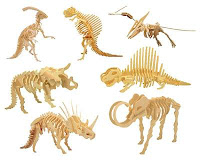 |
| laser cut snowflakes I created |
The title of this post hopefully got you thinking about what duct tape learning. When we think of duct tape we think of fixing, repairing, creating constructing, etc. That's exactly the kind of work I want my students to be doing right now. Using duct tape also means we aren't always going to be super precise and there is room for constant improvement.
 |
| Student prototype cut and etched |
What has really helped me from the kit is how to frame questions for students to reflect upon and share their learning with others at each step of the design process. We are going to be doing quick daily 'tailgate' meetings, and 2-5 min team presentations that will be opportunities for formal feedback from myself and peers. Tomorrow we are starting team blogs and I'm going to tell students to take our their smart phones and use them as much as possible to document their product development. I'm still struggling however to get to that stage where students reach a deeper level of understanding of why reflection and public sharing of their learning is so important. Getting some students to blog with or without writing prompts is a challenge for me right now. I'm also struggling with students who want to 'get it done' as quick as possible and are waiting to be 'spoon fed' where to look for ideas or how to use a certain aspects of the tools we are using.
 |
| eraser and marker holder |
Most students have moved on to EXPERIMENTATION. This is where it gets fun. While one student is designing decorative wall hangings that look like cutting boards, another is finding out how to make a 2 piece ornament that has a spinning centre piece. Each day I'm also working on demonstrating how to take and idea from research, sketch, prototype, analyzing the prototype and creating a final product. One of these was a holder for my white board eraser.
 |
| Duct tape in all sorts of colours and a prototype wallet |
But she's made a lot of them before.
I've asked her to do something that is out of her comfort zone by challenging her to diversify her product line and make other models of the wallet. A clutch style for women, a slim wallet for just a few cards and cash are some other ideas for wallets. Pricing, packaging and promotion will also be a good challenge for her.
This week groups transition at different times from EXPERIMENTATION to EVOLUTION where feedback from people in our community will influence whether or not they change their products, pricing or packaging or all three!
All of this is pretty experimental for me. I've given a lot of freedom to groups to pick almost anything they want to make, and now I'm going to support teams as they need guidance or technical help with tools on the computer. What's kind of cool right now is that I've got students designing on paper, on Inkscape, Corel, with cardboard and everywhere in between!
If you want to check out my wiki where I've made my first feeble attempt and organizing this crazy process check it out here. I'd also love to hear your thoughts on helping students through reflection for deeper understanding of their learning. I'll write an update next week with more student prototypes.

















